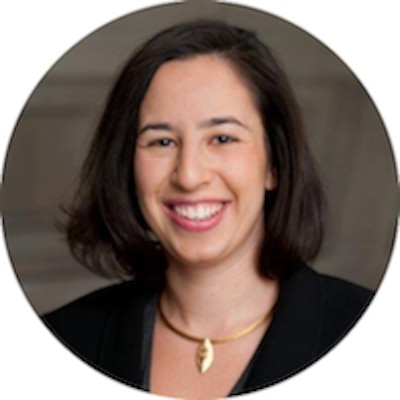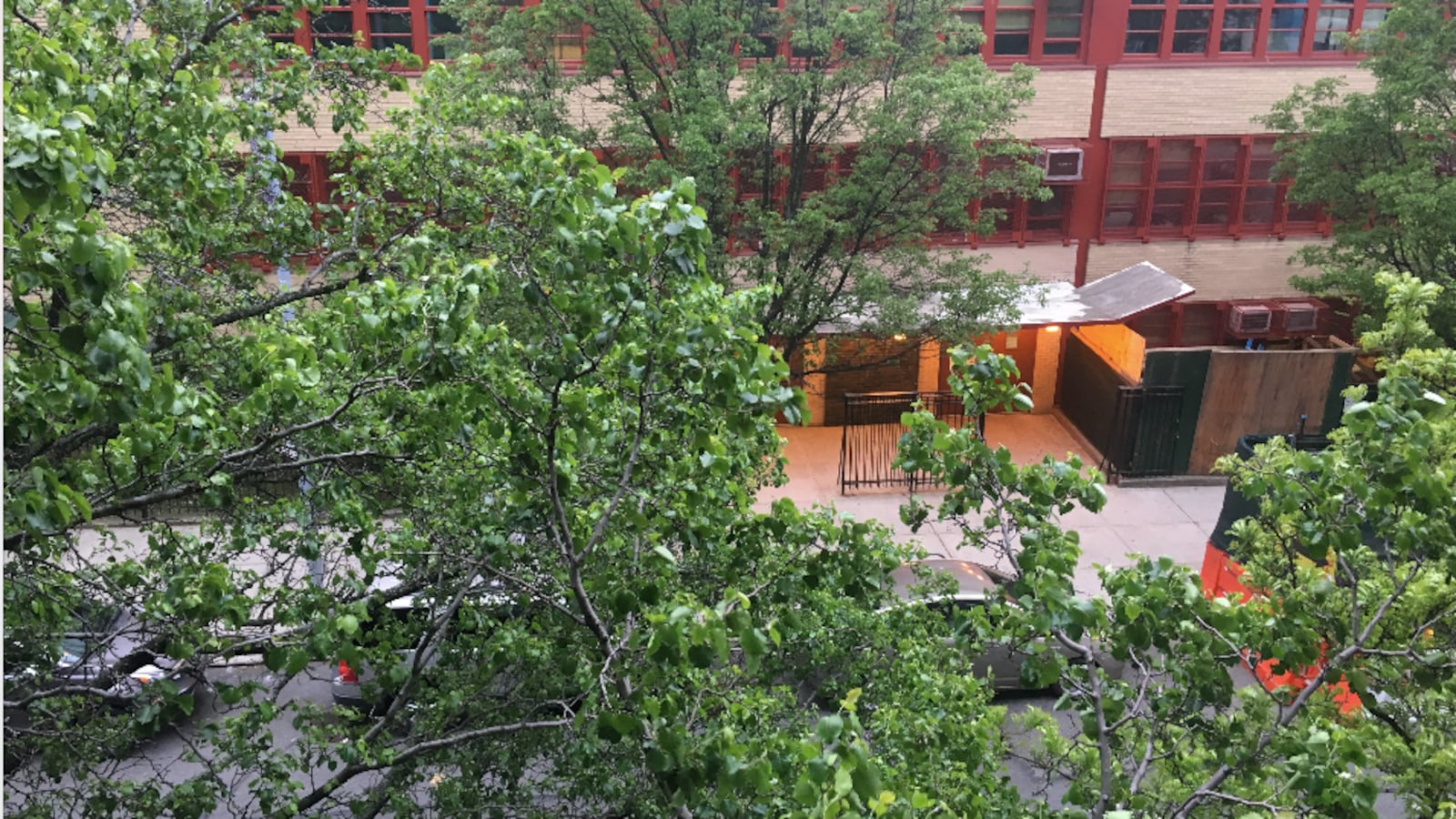This is the third entry in a series we’re calling How We Got Here, where students and families explain how they chose, or ended up at, the schools they did. You can see the whole series here.

I knew schooling would be a sticky issue for my husband and me. He was raised by two public school teachers, opted out of his zoned school to go to a less well resourced one, and saw active engagement in the public school system as a duty of citizenship.
Meanwhile, I had been raised by striving parents and sent to the infamously elite Horace Mann School, where I was decidedly not in with the in-crowd — and I loved it. I loved that if I could dream it, I could write up a proposal and get a budget for it. I loved that I found my home in the out crowd, the goths and punks and nerds and theater kids. But I don’t think Horace Mann ensured my or my classmates’ success later in life.
So when we realized late last year that my daughter, born in the last week of 2012, could be entering kindergarten in 2017, I tried to keep an open mind, unclouded by the terrible things my mother had always said about public school. The fact was, my husband and I shared the primary goal of finding an educational setting that would first and foremost support our daughter’s social and emotional development. We realized this might have been different from our (and especially my) parents’ goals. We decided to first look at public schools, since we figured we would have the option of starting her a year later if she went to private school.
We started with P.S. 145, the school across the street from our apartment in the Manhattan Valley neighborhood of the Upper West Side. We see into the classrooms from our windows, and occasionally hear music classes in the morning. I didn’t expect to like it, not because of anything I had observed, but simply because no one I knew liked it. Anyway, the test scores were abysmal, some of the lowest in the district. I figured we would do our due diligence, then send her to private school next year or push for a spot at the progressive and beloved Manhattan School for Children, a public school that accepts students from across our district. That’s what so many other families like ours do, including our neighbors whom the New York Times profiled recently in a story about the complexity of school choice.
When we went to P.S. 145, I was stunned. Where were the disciplinarian teachers yelling at the kids? The overcrowded classrooms? The sheer lack?
The fact is, I was charmed by the abundance and diversity of student artwork, not only in classrooms but throughout the common spaces. I was impressed that each student has art, music, and dance each week, and that the goal is to build kids’ confidence not only as artists, but as people. The Studio in a School art teacher explained how they do an art school-style critique at the end, where students are encouraged to make observations about their classmates’ work. She also told us that they displayed not only works the students were most proud of, but also pieces they might feel ambivalent about, to show that all kinds of artistic expression can be appreciated. There was a new TV studio with a dedicated and very enthusiastic educator, Mr. Hunter, who would help teachers and students integrate video projects into their academic work. There were two dual language tracks. The teachers seemed happy and kind, and the students did, too.
But there were a few things that irked me. First, there was the giant “Merry Christmas” banner that greeted me in the lobby. Yes, there were some nods to Hanukkah and Kwanzaa throughout the school, but as a religious Jew, I was uncomfortable with how Christmassy it all was. Second, because of timing, we hadn’t seen a lot of actual classroom instruction. Moreover, there was a typo in an assignment posted on the wall. I’m nitpicky like that.
Still, the arts programming and the overall positive environment attracted me for our daughter. People had warned us that P.S. 145 was the bottom of the barrel — so I was excited to move on to the higher-tier public schools!
Manhattan School for Children was next on our list. It was recommended by parents that we love and respect as friends and mentors. The parent volunteers spoke my language: “progressive education,” “constructivist philosophy,” “integrated curriculum.” I was swooning.
But, by and large, I did not see it borne out in the instruction. Yes, the school was lovely (oh, that greenhouse!), but I didn’t see the progressive instruction I was craving. I saw frontal instruction over and over again. And while the parent volunteers talked about process-over-product oriented arts, the integrated curriculum meant that the arts (at least what we saw) were in service of the academics. Instead of seeing students given materials and challenged to create, we saw assignments that asked them to, for example, make a cloud out of cotton balls or build papier mache globes. And the classes were so big — 27 kids per classroom, as compared to the 18 kids in P.S. 145 classrooms. My daughter tends to get lost in the crowd — and lost in her inner thoughts — so opportunities for an adult to make eye contact with her were important to me.
Then, my husband pointed out that of 27 kindergarteners, only two were kids of color. I wondered how that could be, given the school’s blind admissions lottery and the demographics of the people we see in the neighborhood every day. Again, the school was fine, but after all the hype, I wondered: Is this really what we wanted?
My mom used to say, “People in New York always talk about real estate and schools.” This year was the year of the latter for me. I talked to everyone I could. On the street, a friend introduces me to an Manhattan School for Children parent: “They are really trying to reduce the amount of homework they were giving, because studies show homework doesn’t really help elementary school kids.” Hey, I said to my friend, who still has a few years before this applies to her, P.S. 145 also doesn’t emphasize homework for that very reason! She shakes her head. “So it’s all art and no work?”
At kiddush (the post synagogue social-hour), I overhear a parent talking about P.S. 145 positively. I am thrilled. As we talk, though, it turns out she is only considering the pre-K. “I would never send her there for elementary school.”
While out sledding, my daughter befriends a Upper West Success Academy student. Her dad tells me that he’s concerned about the amount of homework at the charter school, but they didn’t want to send her to a school with no homework, and while there were some OK public schools in Harlem, where they lived, he didn’t want his daughter to be the only white kid. “Why not?” I ask. I really want to know — after all, that might well be the situation for my daughter — and when choosing a school, I thought all questions were on the table. All of a sudden though, it got cold and everyone decided to go their separate ways without addressing the question. I had killed the conversation.
After more and more school visits, my husband and I narrowed down our options to P.S. 145 and Beit Rabban, a progressive, private Jewish school that we also fell in love with. Of course, as a Jewish school, Beit Rabban had limited diversity, but it offered an outstanding Jewish and general education. We knew everyone there. And yet.
A rabbinic colleague of mine suggested sending my daughter to public school — there was no loss for us if it didn’t work for our family and we switched to Beit Rabban further along, which was what happened (at a different Jewish school) for her family. She had also felt strongly about public education, but it wasn’t right for her son. That sounded sensible enough, but before committing, I wanted to meet P.S. 145’s principal, Dr. Russo, who hadn’t been on the tour.
My husband and I arrived and sat at a large table in her office. I noted a sign reading, “I’m silently judging your grammar.” Snarky meme though it may have been, it spoke to me. I mentioned that I liked it to break the ice. “Me too,” she said. “Most people don’t, though.”
We sat awkwardly looking at each other. She seemed so much younger and more serious than I was expecting. Also, she didn’t seem to have a pitch. “So … what brings you here?” she asked. “We are prospective parents, and we wanted to know whether this school would be a good fit for our daughter,” I prompted her. “What would you like to know?” she asked. I was panicking. This was bad. At this point, we had seen so many eager-to-please-and-run-to-their-next-meeting principals that this was a stark contrast. My husband started with some softball questions, then I got more detailed. Soon enough, she took the lead, and laid out an impressive vision for a school that could meet the needs of children from all economic backgrounds, including those in temporary housing. She talked about how class sizes were intentionally kept small, and how she used a discretionary budget to have a long term substitute as a second teacher in the already small classrooms. She talked about continuing education for teachers. She said all the teachers knew all the students. On top of that, there was time every Tuesday for parents to meet with their children’s teachers. I was impressed that she had planned and implemented so many positive initiatives.
We enrolled my daughter in the public school across the street. I am not going to pretend to know I have made the right decision. No one making a match for a four-year-old should have the hubris to believe they know for sure. And I recognize that I hold a tremendous amount of privilege to have the certainty of a private school Plan B if anything, including supplementary Jewish education, isn’t working right for our child.
One thing I am pretty confident about? I’ve spent more time inside P.S. 145 than the finance lawyer who was recently quoted in the New York Times as saying, “I feel like it would almost be malpractice to send my kids to school” there.
And as I saw a group of kids and teachers make their way from the school into Silver Moon Bakery for a kitchen tour, it seemed the loveliest thing to imagine my daughter joining them and exploring the world around her.
Mia Simring is a rabbi living in her native New York City, where she and her husband are raising two fourth-generation New Yorkers.
About our First Person series:
First Person is where Chalkbeat features personal essays by educators, students, parents, and others trying to improve public education. Read our submission guidelines here.

